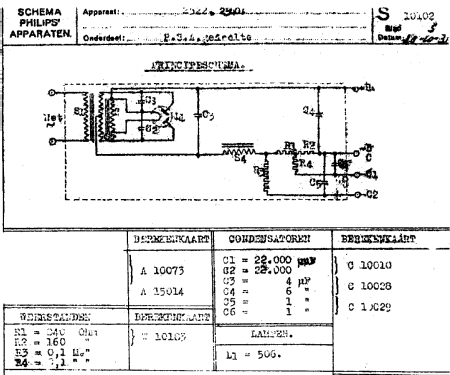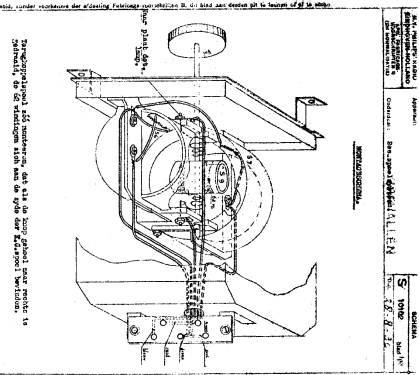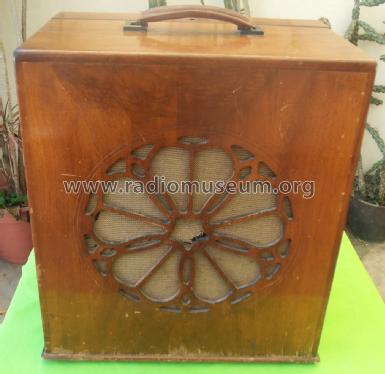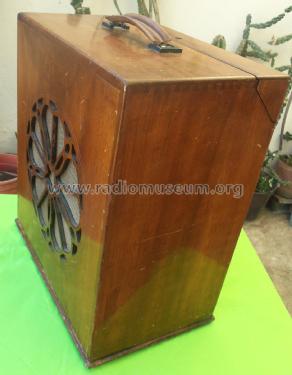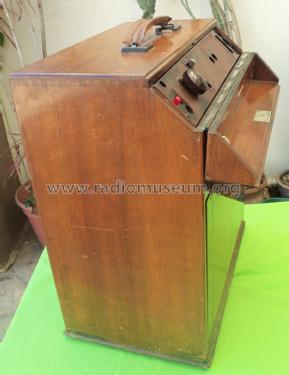Portable Radio 2540
Philips Electrical, Lamps, Industrial - Miniwatt; London
- Pays
- Royaume Uni
- Fabricant / Marque
- Philips Electrical, Lamps, Industrial - Miniwatt; London
- Année
- 1930/1931
- Catégorie
- Radio - ou tuner d'après la guerre 1939-45
- Radiomuseum.org ID
- 331993
Cliquez sur la vignette du schéma pour le demander en tant que document gratuit.
- No. de tubes
- 4
- Principe général
- Récepteur TRF - par réaction (régénératif); 2 Etage(s) BF; Réaction
- Gammes d'ondes
- PO et GO
- Tension / type courant
- Piles (rechargeables ou/et sèches) / 2 & 4 & 100-110V & 15 Volt
- Haut-parleur
- HP mais de technologie inconnue / Ø 11 inch = 27.9 cm
- Puissance de sortie
- 0.4 W (qualité inconnue)
- Matière
- Boitier en bois
- De Radiomuseum.org
- Modèle: Portable Radio 2540 - Philips Electrical, Lamps,
- Forme
- Portative > 20 cm (sans nécessité secteur)
- Dimensions (LHP)
- 400 x 460 x 240 mm / 15.7 x 18.1 x 9.4 inch
- Remarques
-
This radio has a turntable or swivel base to orient the cabinet and access the controls that are on the back.
The circuit has an RF amplifier stage and a reaction detection stage.
The radio has a built-in speaker, internal loop antenna and external antenna inputs, ground and input for pick up, with output for external speaker.
The medium wave band ranges from 500 to 200 meters and the long wave band ranges from 1000 to 2000 meters.
Similar to the Philips 2540 built in Holland, and to the Philips 2522 which has British Mullard Vf 2 Volt valves .
- Poids net
- 21 kg / 46 lb 4.1 oz (46.256 lb)
- Schémathèque (1)
- - - Manufacturers Literature (Service manual dated 12/5/1930 (in Dutch))
- Auteur
- Modèle crée par Rodolfo Gaston Wenceslao Nasasta. Voir les propositions de modification pour les contributeurs supplémentaires.
- D'autres Modèles
-
Vous pourrez trouver sous ce lien 426 modèles d'appareils, 302 avec des images et 285 avec des schémas.
Tous les appareils de Philips Electrical, Lamps, Industrial - Miniwatt; London
Collections
Le modèle Portable Radio fait partie des collections des membres suivants.



